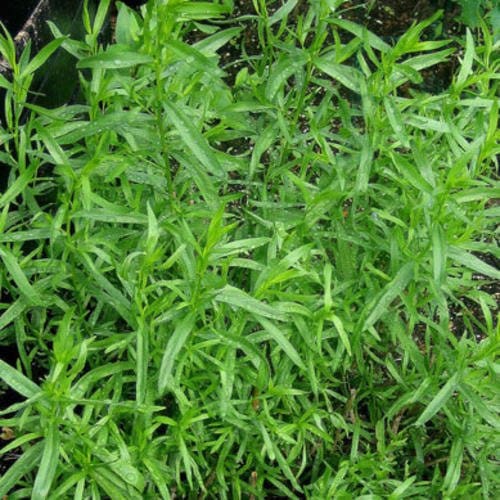
Tarragon
Tarragon, known botanically as Artemisia dracunculus, is a leafy green herb that boasts a subtle, bittersweet flavour with hints of anise and vanilla. Native to Eurasia and widely cultivated in Europe and North America, tarragon has become a cornerstone of French cuisine, earning a place among the revered “fines herbes” alongside chervil, chives, and parsley.
There are two main types of tarragon: French and Russian. French tarragon (Artemisia dracunculus var. sativa) is prized for its refined taste and is most commonly used in cooking. Russian tarragon, while more robust and easier to grow, has a coarser flavour and is less favoured in culinary applications. A third type, Mexican tarragon (Tagetes lucida), although not a true tarragon botanically, is often used as a substitute in warmer climates where French tarragon struggles to thrive.
Tarragon leaves are long, narrow, and glossy, typically used fresh due to their delicate flavour which can diminish when dried. The herb pairs wonderfully with chicken, fish, and egg dishes, and is a key ingredient in classic sauces like Béarnaise. Its aromatic properties also make it ideal for infusing vinegars, lending a distinctive flavour to salad dressings and marinades.
Aside from its culinary uses, tarragon has been valued historically for its medicinal qualities. Traditionally, it was used to aid digestion, stimulate appetite, and relieve toothaches. It contains antioxidants and compounds such as estragole, which contribute to its unique aroma and potential health benefits.
When cooking with tarragon, restraint is key. Its potent flavour can easily overpower other ingredients if used in excess. For best results, add fresh tarragon towards the end of cooking to preserve its essence.
Whether used to elevate a creamy sauce or simply sprinkled over roasted vegetables, tarragon remains a refined herb that brings a touch of elegance to any dish.
